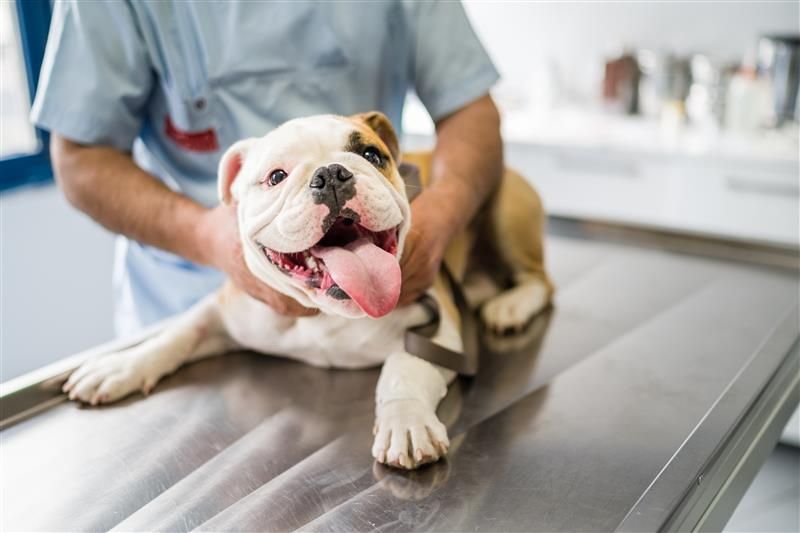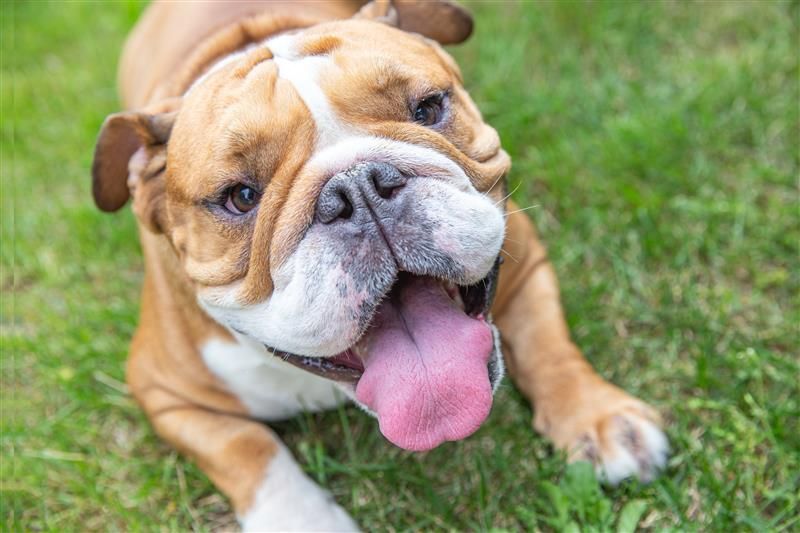6 Most Common Orthopaedic Issues in Bulldogs
A bulldog’s compact build and unique weight distribution make them prone to joint stress and spinal issues. So, in the world of dog orthopaedics, they are considered one of the highest-risk breeds.
The good news is that with the right veterinary expertise, many of these problems can be corrected or managed, helping your bulldog to live a happier, more active life.
In this blog, we’ll walk you through the causes and warning signs for the 6 most common orthopaedic conditions in bulldogs, and how
dog orthopaedic surgery is often the best treatment.
Whether you’re worried about new symptoms or simply want to protect your bulldog’s health long-term, our guide will give you the knowledge — and the reassurance — you need.
Joint issues in dogs are common, but no less debilitating — especially in brachycephalic breeds. If your dog’s mobility is affected, call Sydney Bulldog Clinic on (02) 8811 4604 to book an orthopaedic consultation today.
A bulldog’s anatomy consists of short, stocky bones. Over time, this compact skeletal structure affects the way their joints function.
Shortened limb bones alter joint angles, which can lead to uneven wear and instability in the knees, hips, and elbows. Their broad, barrel-shaped chest shifts weight forward, placing extra strain on the spine and front legs. Their spines also often have malformed vertebrae, making them even more susceptible to spinal damage.
Because of these differences, bulldogs often don’t respond to the same health and lifestyle advice given to other breeds. While regular running may strengthen joints in some dogs, it can put excessive stress on a bulldog’s already vulnerable knees and hips. Even normal ageing can bring on joint deterioration earlier than expected.

6 Common Orthopaedic Problems in Bulldogs
1. Cruciate Ligament Injuries
- What is it: A tear or rupture of the cranial cruciate ligament in the knee, one of the most common causes of lameness in bulldogs.
- Signs and symptoms: Sudden limping, difficulty bearing weight, stiffness after rest or cold weather.
- Treatment options: Tibial plateau leveling osteotomy (TPLO) or tibial tuberosity advancement (TTA) surgery is usually required to stabilise the knee joint.
2. Patella Luxation
- What is it: The kneecap slips out of its normal groove, causing pain and abnormal movement.
- Signs and symptoms: Skipping or hopping gait, bouts of lameness, reluctance to play or exercise.
- Treatment options: Mild cases may be managed with physiotherapy and weight control. Moderate to severe cases usually need corrective surgery. Medial patella luxation (MPL) surgery will restore proper alignment and function of the kneecap.
3. Hip Dysplasia
- What is it: Poorly developed hip joints that loosen over time, developing into arthritis.
- Signs and symptoms: Stiffness, bunny-hopping gait, difficulty rising, and reduced stamina.
- Treatment options: Preventative juvenile pubic symphysiodesis (JPS surgery) is the most effective way to stop young bulldogs from developing hip dysplasia. A total hip replacement may be the only treatment option available when they’re older.
4. Elbow Dysplasia
- What is it: Abnormal growth or development of the elbow joint, leading to arthritis.
- Signs and symptoms: Front-leg lameness, reluctance to run or play, uneven gait.
- Treatment options: Corrective, surgical removal of fragments and realignment procedures can improve joint function and reduce pain.
5. Arthritis
- What is it: Degenerative joint disease, where cartilage wears down, causing chronic pain.
- Signs and symptoms: Stiffness, reduced movement, worsening after rest or in cold weather.
- Treatment options: Lifestyle changes, such as weight management, low-impact exercise and using ramps instead of stairs, can have an immediate effect. Other options include joint supplements, anti-inflammatory medication or injections, physiotherapy, and, in advanced cases, surgery.
6. Spinal Abnormalities
- What is it: Malformations or disc problems in the spine, such as intervertebral disc disease (IVDD) and hemivertebrae, which may put pressure on the spinal cord. Common in screw-tailed bulldogs.
- Signs and symptoms: Back pain, unsteady walking, or dragging legs. In severe cases, paralysis
- Treatment options: Rest and medication are best for mild cases, whilst surgical decompression followed by physiotherapy is needed for severe cases.

Getting a Diagnosis
The only way to know if your bulldog is suffering from a chronic orthopaedic condition is to get them thoroughly examined by a vet. At Sydney Bulldog Clinic, we use a combination of hands-on assessment and advanced imaging to get a complete picture of your bulldog’s joint health before starting treatment.
In a physical assessment, your vet will carefully move each joint to check for instability or discomfort and observe your bulldog’s gait.
X-rays can help to provide clear images of damage or degenerative conditions, and in more complex cases, CT scans can be utilised to create 3D images of bones and joints. This gives veterinary surgeons detailed insight for surgical planning.
Blood tests and joint fluid analysis may be recommended to check for inflammation or infection.
Get Advanced Orthopaedic Surgery and Post-Surgery Care at Sydney Bulldog Clinic
Our team of orthopaedic surgeons provide tailored solutions for every bulldog, from minimally invasive procedures to complex joint reconstructions.
Our comprehensive bulldog care services don’t stop once the operation is over. We create a personalised recovery plan for your dog, complete with pain management guidance to keep them calm, comfortable and as pain-free as possible during healing.
We also offer a range of
dog physiotherapy and rehabilitation options, such as hydrotherapy to boost muscle circulation and ease joint pain, massage therapy to restore a dog’s range of motion, and physical therapy to build strength and flexibility.
If your dog is showing signs of pain, stiffness, or lameness, schedule a consultation with a vet at Sydney Bulldog Clinic to discuss surgical intervention. Our orthopaedic team is here to help get them back on their feet!
FAQs
Why Is My Bulldog Limping?
The most common causes of limping in bulldogs are a cruciate ligament tear, medial patella luxation (MPL), and hip dysplasia. If your dog has only just started limping, it could be because of an injury to its paw, something stuck in its paw, an insect bite, or a leg sprain. Get a vet to assess your bulldog to determine the cause and the best way to treat it.
Can Bulldog Orthopaedic Conditions Be Prevented?
While you can’t completely prevent bulldog joint problems because many are genetic, you can reduce the risks. Keep your dog at a healthy weight, avoid high-impact exercise, and get regular vet check-ups to help protect their joints and catch problems early.
Are There Non-Surgical Treatments for Bulldog Joint Problems?
Injuries and minor orthopaedic issues can often be managed with a healthy diet, reduced exercise, medication, and physio. Chronic or hereditary mobility issues, however, often need to be treated with surgery to properly rectify them.
What’s the Recovery Time for Dog Orthopaedic Surgery?
Spine or joint surgery for dogs usually requires a full recovery period of 2-3 months. During this time, your bulldog should follow strict rest and activity restrictions and attend any follow-up appointments scheduled by your vet.



